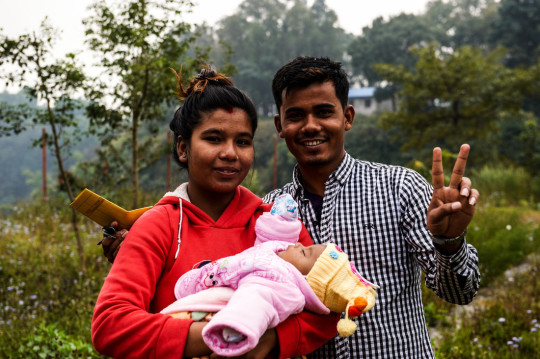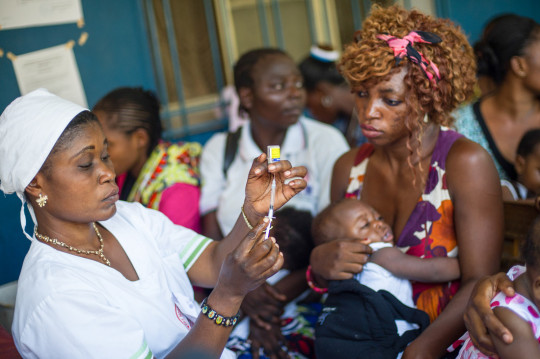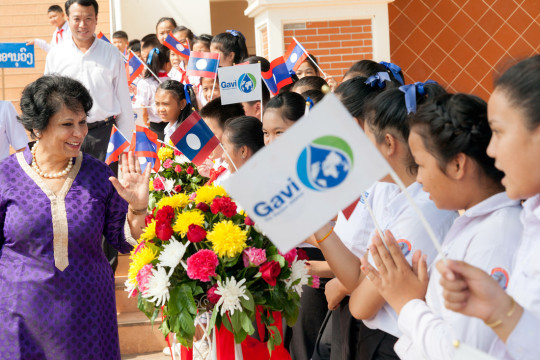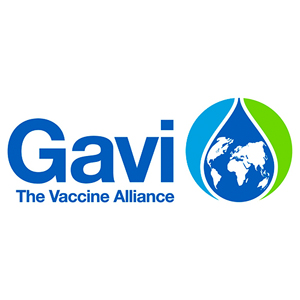Anuradha Gupta, DCEO of Gavi, the Vaccine Alliance

A mother and father celebrate their baby’s vaccination in Nepal. Photo: Gavi/Oscar Seykens.
In 2016, girls and women are still more likely to miss out when it comes to the advances of global development: going to school, getting well paid for their work or representing their country politically.
For immunisation, this is not the case. At a global level, girls and boys are globally just as likely to get vaccine protection. This is no small victory.
But today, on International Women’s Day, with one-in-five children in the world under-vaccinated we must hold off the celebrations. Last month I was privileged to join Africa’s first ladies as they united to call for renewed efforts to reach all children on the continent. Although it may be difficult to discern at first, women’s unequal standing in the world has everything to do with this.
The reasons are straightforward. From the nurses that deliver vaccines, to the mothers who sometimes must walk miles in suffocating heat to bring their children to health clinics, women are at the heart of both demanding and delivering immunisation. Yet continuing and widespread inequalities mean their involvement is too often limited by the very fact they are women.

Mother and child get ready for a vaccine in Kinshasa, DRC. Photo: Gavi/Phil Moore.
This can take many forms. For instance, recent research demonstrated the damaging disconnect between a woman’s typical responsibility for child health within a family, and her often diminished role in deciding how household resources are spent. Solving this requires that parents share responsibilities for both vaccination and spending. Vaccination campaigns can encourage change by targeting fathers as well as mothers.
Cultural inequalities can also obstruct access to immunisation. In societies where women are rarely allowed out of the house, mothers report feeling unable to take their children to get vaccinated. Similarly, expectations that women rather than men should carry out chores and other housebound activities restricts time and freedom to attend a clinic.
As our friends at ONE assert, poverty is sexist, and where the social consequence of looking poor is maternal shame, this can also stop the most vulnerable women from taking their children to be immunised. Sometimes patronising or negative attitudes towards poorer women and children are even held by health workers themselves. This too acts as a further deterrent.
Gender barriers standing in the way of better immunisation coverage are complicated and challenging. But, significantly, none of them are unique to immunisation. By understanding them in the wider context of women’s inequality, we not only stand a better chance of finding solutions, but we have the opportunity to better align immunisation with education and other sectors fighting for women’s empowerment. While equal rights for women remains the bigger picture, giving voice to tangible negative consequences – in this case, children unprotected from preventable diseases – adds another piece to the gender equality puzzle, strengthening the call for equality.
This fresh perspective on immunisation is yet another demonstration of the potential of female empowerment and gender equality. Both can save and improve lives in the long run, adding another compelling reason to support them all year around, and to advocate even more strongly for them this International Women’s Day.

The author at a vaccine launch in Laos. Photo: Gavi/ Bart Verweij






